-
 Bitcoin
Bitcoin $118900
0.42% -
 Ethereum
Ethereum $3710
-2.88% -
 XRP
XRP $3.513
-2.96% -
 Tether USDt
Tether USDt $1.000
-0.01% -
 Solana
Solana $203.0
3.65% -
 BNB
BNB $765.5
-1.29% -
 USDC
USDC $0.9998
0.00% -
 Dogecoin
Dogecoin $0.2671
-4.18% -
 Cardano
Cardano $0.8817
-3.63% -
 TRON
TRON $0.3139
-0.64% -
 Hyperliquid
Hyperliquid $44.34
-5.45% -
 Stellar
Stellar $0.4637
-4.08% -
 Sui
Sui $3.908
-2.59% -
 Chainlink
Chainlink $19.34
-2.62% -
 Hedera
Hedera $0.2712
-3.77% -
 Avalanche
Avalanche $24.97
-4.13% -
 Bitcoin Cash
Bitcoin Cash $519.8
-1.48% -
 Shiba Inu
Shiba Inu $0.00001518
-3.74% -
 Litecoin
Litecoin $115.6
-2.21% -
 Toncoin
Toncoin $3.460
3.68% -
 UNUS SED LEO
UNUS SED LEO $8.977
-0.07% -
 Polkadot
Polkadot $4.460
-2.96% -
 Uniswap
Uniswap $10.53
-5.43% -
 Ethena USDe
Ethena USDe $1.001
0.01% -
 Monero
Monero $323.6
-0.36% -
 Pepe
Pepe $0.00001379
-2.60% -
 Bitget Token
Bitget Token $4.772
-3.90% -
 Dai
Dai $0.9999
0.00% -
 Aave
Aave $307.5
-6.66% -
 Bittensor
Bittensor $441.8
0.84%
How to set a conditional order for HTX contracts? How to fill in the trigger price?
Setting up a conditional order on HTX involves choosing the order type, setting a trigger price, and specifying the quantity, enhancing trading automation and risk management.
May 17, 2025 at 02:14 pm
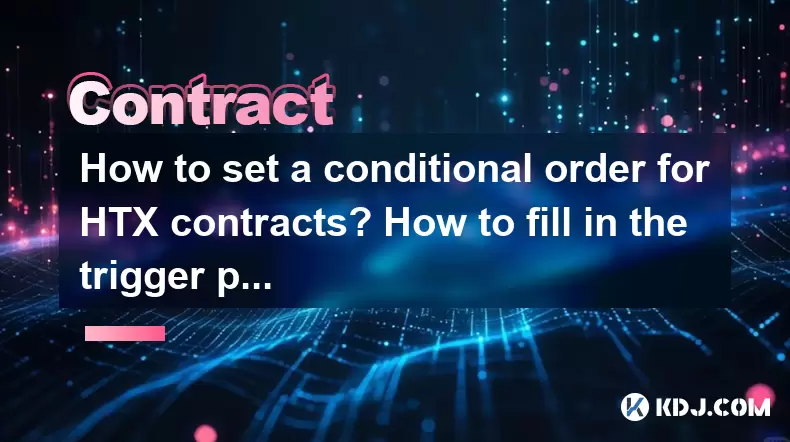
Setting a conditional order for HTX contracts can be a powerful tool for traders looking to automate their trading strategies. This article will guide you through the process of setting up a conditional order on HTX and explain how to correctly fill in the trigger price. Whether you're a beginner or an experienced trader, understanding these steps will enhance your trading capabilities on the HTX platform.
What is a Conditional Order?
A conditional order, also known as a trigger order, is an order that is executed only when certain conditions are met. On HTX, this typically involves setting a trigger price at which the order will be activated. Conditional orders allow traders to set buy or sell orders that will only be executed when the market reaches a specific price, helping to manage risk and capitalize on market movements without constant monitoring.
Accessing the Conditional Order Feature
To begin setting up a conditional order on HTX, you need to access the trading interface. Here’s how to do it:
- Log into your HTX account.
- Navigate to the trading section. This can usually be found under the 'Markets' or 'Trade' tab.
- Select the contract you wish to trade. HTX offers various types of contracts, so make sure you choose the correct one.
- Find the 'Order' section. Within this section, look for an option labeled 'Conditional Order' or similar.
Setting Up a Conditional Order
Once you have accessed the conditional order feature, you can start setting up your order. Follow these detailed steps:
- Choose the type of conditional order. HTX typically offers options like 'Trigger Order' or 'Stop Order'. Select the one that aligns with your trading strategy.
- Select 'Buy' or 'Sell'. Decide whether you want to set a conditional buy or sell order.
- Enter the trigger price. This is the price at which your order will be activated. The trigger price is crucial as it determines when your order will become active.
- Set the execution price. This is the price at which your order will be executed once it is triggered. It can be the same as the trigger price or different, depending on your strategy.
- Specify the quantity. Enter the number of contracts you want to buy or sell.
- Review and confirm. Double-check all the details you have entered, then submit the order.
Filling in the Trigger Price
The trigger price is the heart of a conditional order, and setting it correctly is essential for your trading strategy. Here's how to fill in the trigger price effectively:
- Determine your trading goal. Are you looking to buy at a lower price or sell at a higher one? This will influence your trigger price.
- Analyze the market. Look at the current market price, recent trends, and any upcoming events that might affect the price.
- Set the trigger price. If you're setting a buy order, the trigger price should be lower than the current market price. For a sell order, it should be higher.
- Consider the volatility. If the market is highly volatile, you might want to set the trigger price further away from the current price to avoid accidental triggers.
- Review and adjust. Before confirming your order, ensure that the trigger price aligns with your risk management strategy.
Managing and Monitoring Conditional Orders
After setting up your conditional order, it's important to manage and monitor it effectively. Here’s what you need to do:
- Check the status of your order. You can find this in the 'Open Orders' section of your HTX account.
- Adjust if necessary. If market conditions change, you may need to modify your trigger or execution price.
- Cancel if needed. If your strategy changes, you can cancel the conditional order before it is triggered.
- Monitor market conditions. Keep an eye on the market to ensure your conditional order aligns with your overall trading strategy.
Troubleshooting Common Issues
Sometimes, traders may encounter issues when setting up conditional orders. Here are some common problems and how to resolve them:
- Order not triggering. Ensure that the trigger price is correctly set and that there are no technical issues with the platform.
- Order executing at the wrong price. Double-check the execution price you set, as it might differ from the trigger price.
- Order not showing in open orders. Refresh the page or log out and back in to see if the order appears. If not, contact HTX support.
FAQ
Q: Can I set multiple conditional orders for the same contract on HTX?
A: Yes, HTX allows you to set multiple conditional orders for the same contract. However, you should manage them carefully to avoid conflicting orders.
Q: What happens if the market price gaps through my trigger price?
A: If the market price gaps through your trigger price, the order will be executed at the next available price, which might be different from your set execution price.
Q: How can I ensure my conditional orders are secure?
A: To ensure the security of your conditional orders, use two-factor authentication (2FA) on your HTX account and regularly monitor your open orders for any unauthorized changes.
Q: Is there a fee for setting up conditional orders on HTX?
A: HTX may charge a fee for executing conditional orders, but setting them up is typically free. Check the fee schedule on the HTX website for the most current information.
Disclaimer:info@kdj.com
The information provided is not trading advice. kdj.com does not assume any responsibility for any investments made based on the information provided in this article. Cryptocurrencies are highly volatile and it is highly recommended that you invest with caution after thorough research!
If you believe that the content used on this website infringes your copyright, please contact us immediately (info@kdj.com) and we will delete it promptly.
- SEC, Bitcoin, and Crypto: Navigating the Wild West of Digital Finance
- 2025-07-23 04:30:12
- Solana NFTs Surge: Riding the Wave of Market Volume and NFT Hype
- 2025-07-23 04:30:12
- Wall Street Pepe (WEPE) and the Solana Meme Coin Mania: A New Era?
- 2025-07-23 03:30:13
- Rare Coin Frenzy: Bidding Wars and the Pocket Change Revolution
- 2025-07-23 02:50:13
- Tokens with Growth Potential & Low Risk: Navigating the Crypto Landscape
- 2025-07-23 03:50:12
- Pepe Dollar, Solaxy, and Meme Utility: A New Yorker's Take on Crypto's Cutting Edge
- 2025-07-23 02:50:13
Related knowledge

How to trade ETH perpetuals on Bitstamp?
Jul 23,2025 at 03:28am
Understanding ETH Perpetual ContractsETH perpetual contracts are derivative products that allow traders to speculate on the price of Ethereum without ...
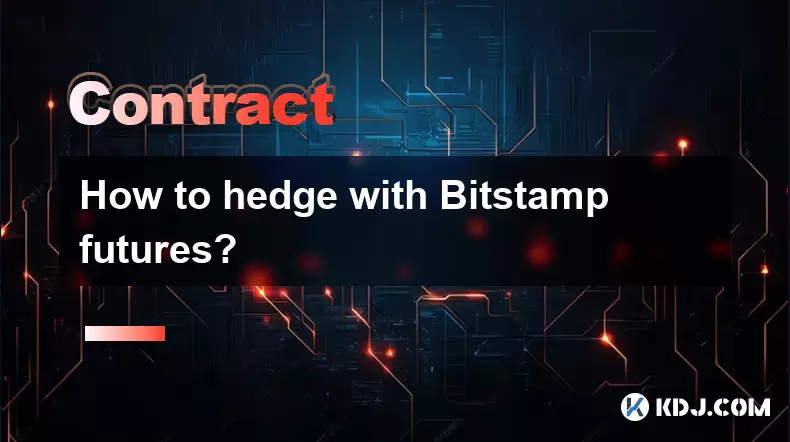
How to hedge with Bitstamp futures?
Jul 23,2025 at 02:00am
Understanding Bitstamp Futures ContractsBitstamp futures are financial derivatives that allow traders to speculate on or hedge against the future pric...
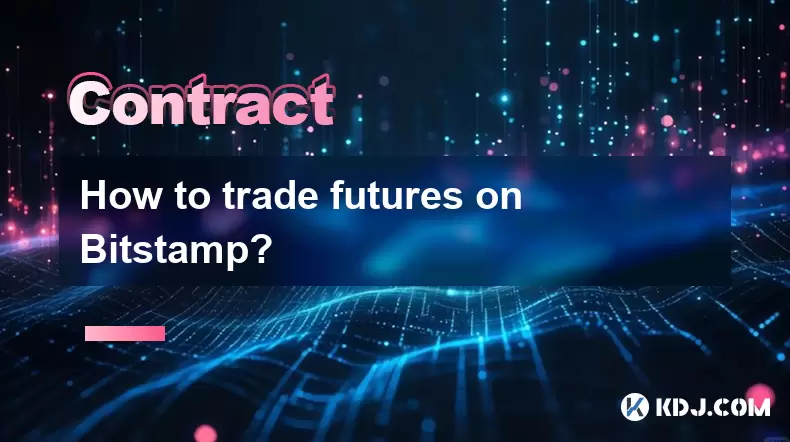
How to trade futures on Bitstamp?
Jul 23,2025 at 12:56am
Understanding Bitstamp Futures TradingFutures trading on Bitstamp allows users to speculate on the future price of cryptocurrencies such as Bitcoin an...
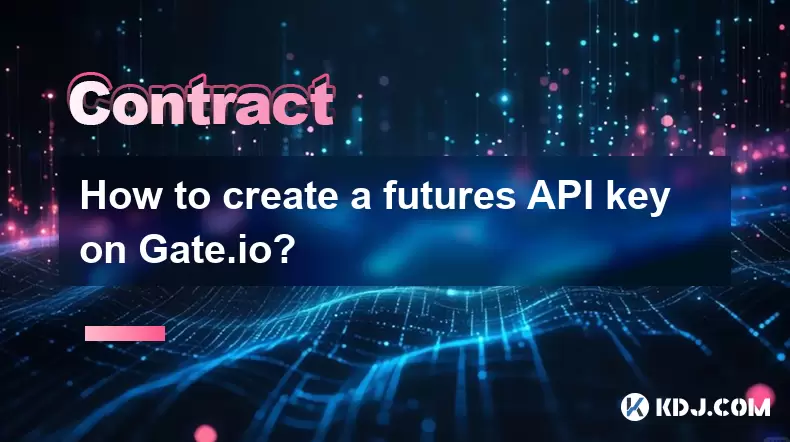
How to create a futures API key on Gate.io?
Jul 23,2025 at 03:49am
Understanding Futures API Keys on Gate.ioA futures API key on Gate.io allows traders to automate trading strategies, manage positions, and retrieve re...
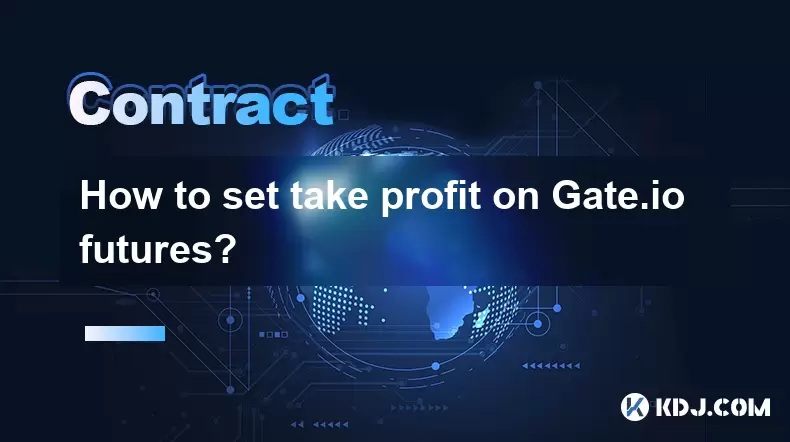
How to set take profit on Gate.io futures?
Jul 23,2025 at 01:14am
Understanding Take Profit in Gate.io FuturesWhen trading futures on Gate.io, a take profit (TP) order allows traders to automatically close a position...
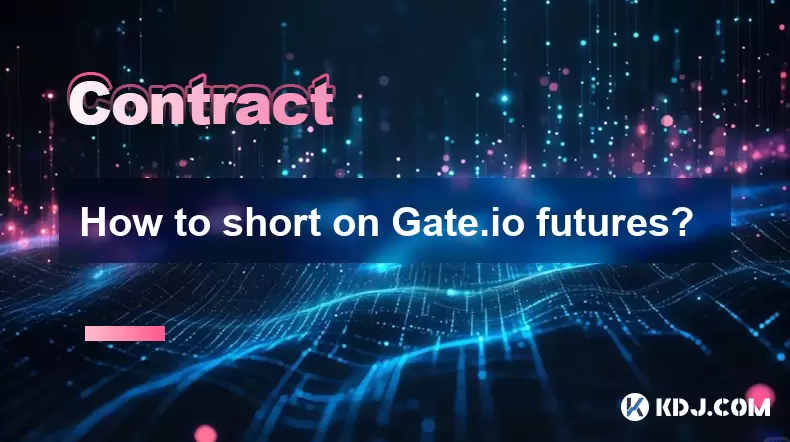
How to short on Gate.io futures?
Jul 22,2025 at 10:42pm
Understanding Futures Trading on Gate.ioFutures trading allows users to speculate on the price movement of cryptocurrencies without owning the underly...

How to trade ETH perpetuals on Bitstamp?
Jul 23,2025 at 03:28am
Understanding ETH Perpetual ContractsETH perpetual contracts are derivative products that allow traders to speculate on the price of Ethereum without ...

How to hedge with Bitstamp futures?
Jul 23,2025 at 02:00am
Understanding Bitstamp Futures ContractsBitstamp futures are financial derivatives that allow traders to speculate on or hedge against the future pric...

How to trade futures on Bitstamp?
Jul 23,2025 at 12:56am
Understanding Bitstamp Futures TradingFutures trading on Bitstamp allows users to speculate on the future price of cryptocurrencies such as Bitcoin an...

How to create a futures API key on Gate.io?
Jul 23,2025 at 03:49am
Understanding Futures API Keys on Gate.ioA futures API key on Gate.io allows traders to automate trading strategies, manage positions, and retrieve re...

How to set take profit on Gate.io futures?
Jul 23,2025 at 01:14am
Understanding Take Profit in Gate.io FuturesWhen trading futures on Gate.io, a take profit (TP) order allows traders to automatically close a position...

How to short on Gate.io futures?
Jul 22,2025 at 10:42pm
Understanding Futures Trading on Gate.ioFutures trading allows users to speculate on the price movement of cryptocurrencies without owning the underly...
See all articles

























































































